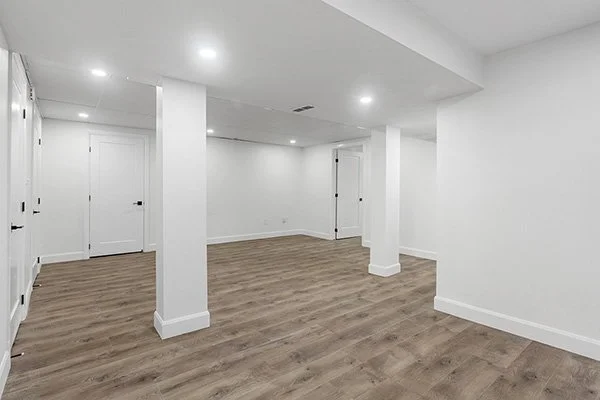6 Basement Layout Mistakes You’re Probably Making
I have two questions for you. First, are you lucky enough to have a lower level offering extra multi-functional living space? Second, are you making the most of it to impress buyers?
Probably not, home experts say. If you’re not thoughtful about you basement layout and its uses, it won’t actually add much value to your property. Here are six common mistakes you may be making when it comes to making the most of basements, and what to do instead.
You have a bunch of small, enclosed rooms.
Homeowners often divide basements into walled-in zones for a home office, a gym, a guest room, and TV area, thinking buyers will love separate spaces. But don’t forget that basements house important systems that regulate temperature and air flow, and an open floor plan makes more sense.
In the future you will need to access some of the systems down there. If you have a bunch of tiny rooms, they are going to make repairs quite time-consuming.
Smart fix: Having some open space makes repairs easier, and it’s also better for your systems themselves, which need fresh air and air flow to function most efficiently without additional wear and tear on your equipment.
You messed around with essential structural elements.
We get it, you don’t want to bang your head on the ceiling. But one big mistake people make when they try to add more head clearance is cutting through ceiling support beams or floor joists without realizing they’re actually holding up the house.
Smart fix: If you’re missing chunks of support beams, they’ll need to be patched to make sure there’s still structural integrity.
You skimped on storage.
Can you ever have too much storage? Spoiler alert: Nope. Sure, it’s great to have livable square footage so you can brag about easily hosting family gatherings. But nothing sends a buyer scurrying away faster than seeing clutter everywhere with nowhere to put it.
Some people want to use every single inch in the basement, but containers of clutter. You’ve got to have adequate storage space.
Smart fix: Devote one wall to open shelving, or add sliding doors that won’t eat into your space when you open them. Make sure any cherished items or boxes of important paperwork aren’t sitting directly on the basement floor, just in case moisture infiltrates.
You laid down the wrong flooring.
Since most basements are at least partly below grade, make sure you’re using the right flooring materials that won’t become irreparably damaged by moisture. So, forget carpet, hardwood, or anything else that won’t dry out quickly.
Smart fix: install vinyl flooring, tile, carpet tiles, or rubber floor tiles that snap together easily. Those materials will be more resilient if there is heavy rain or if water gets into your basement.
You’re in the dark about lighting design.
The key to making small, dark spaces like basements appear bigger is with clever lighting design. Chances are, the basement doesn’t get flooded with natural light due to small windows, so amp up your brightness quotient by installing several layers of light, beginning with what’s overhead.
One of the biggest mistakes people make is trying to use the same cheap flush mount fixtures you see in first-floor living spaces, but those can take up valuable head room.
Smart fix: Because most basement spaces have access space between the floor joists, put in recessed lighting instead. It will also make the space feel more open and inviting. As a final touch, add sconces, table lamps, and standing lamps to warm things up more!
You’ve gone quiet on soundproofing.
If you’re opening up the ceiling to put in recessed lighting, it’s probably a good time to add some soundproofing as well.
Soundproofing is worth the cost, especially in older homes where there isn’t always much insulation between floors. Just think of all the noisy activities taking place downstairs - from movie watching to online gaming tournaments to kids karaoke dance parties - that you can solve quickly and easily.
Smart fix: Add spray-foam insulation if you have access to the ceiling, or tuck in fiberglass insulation that fits between the floor joists. You may also want to put sheetrock over the ceiling because it’ll dramatically improve the way the sound carries.
As an added bonus, any of these solutions will also improve the efficiency of your heating and cooling systems.
Original Post | Written by Wendy Helfenbaum


